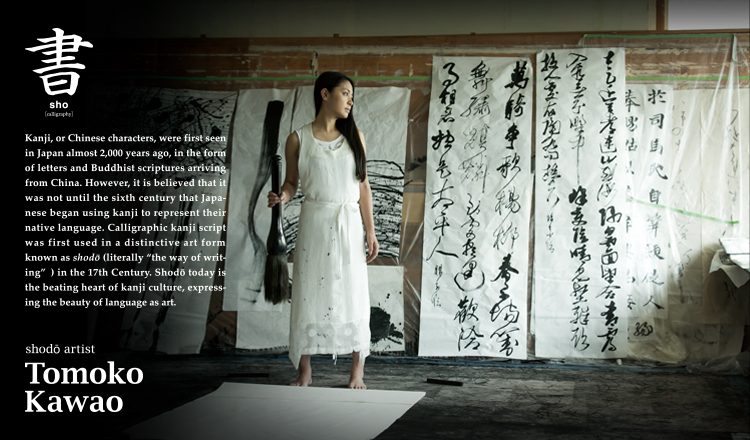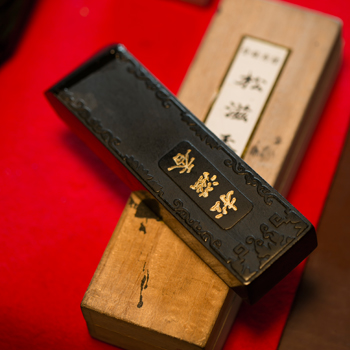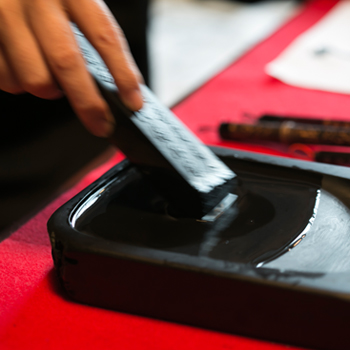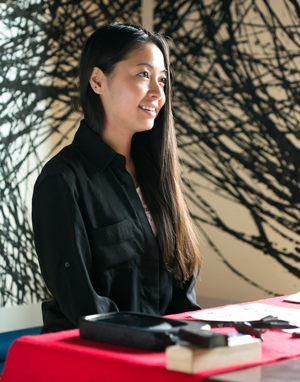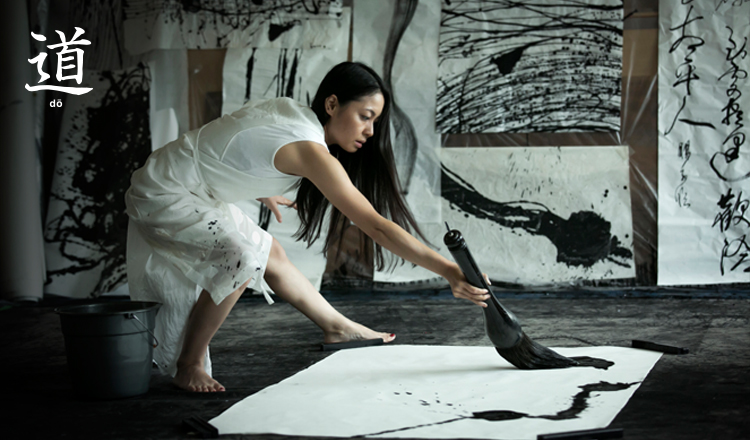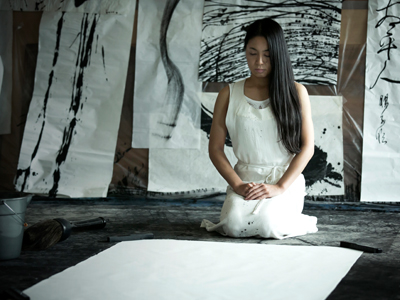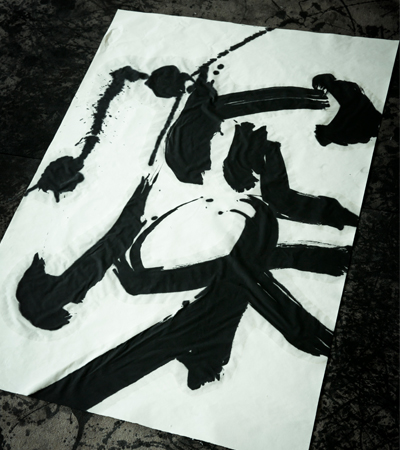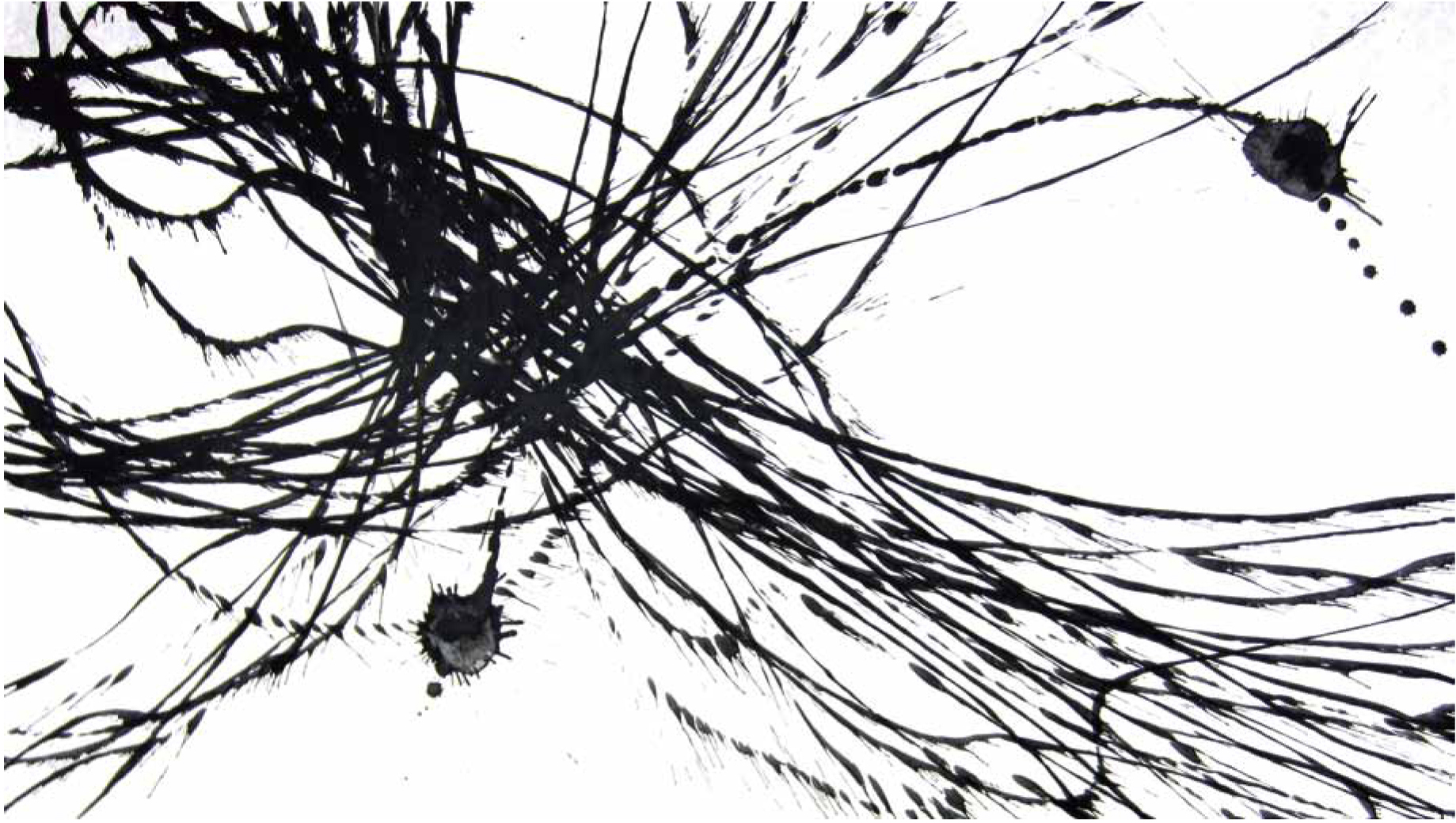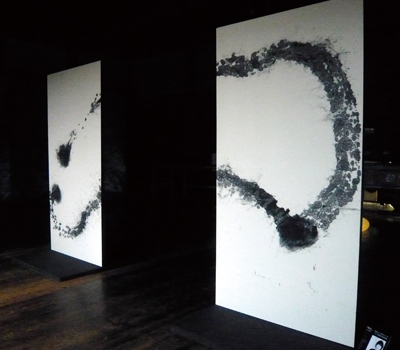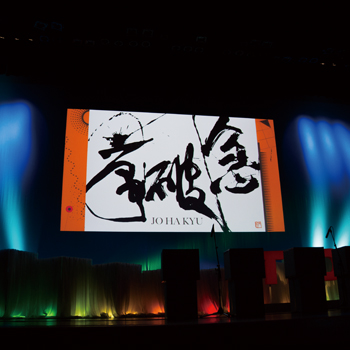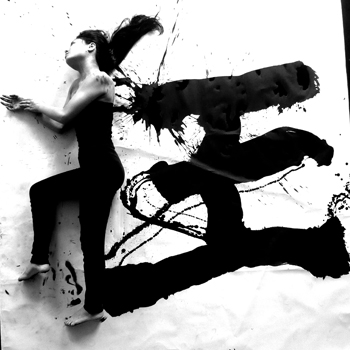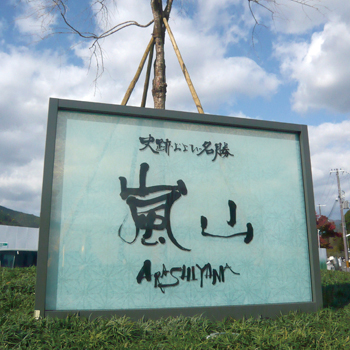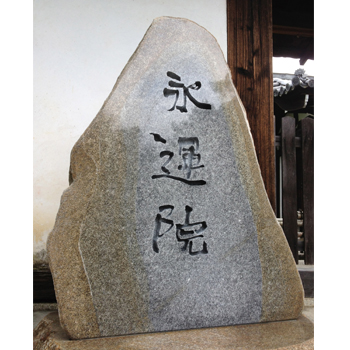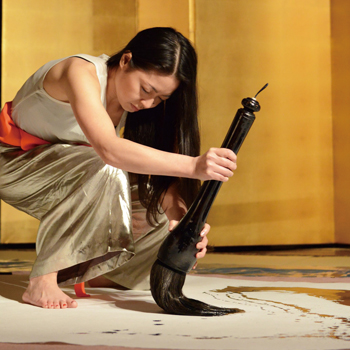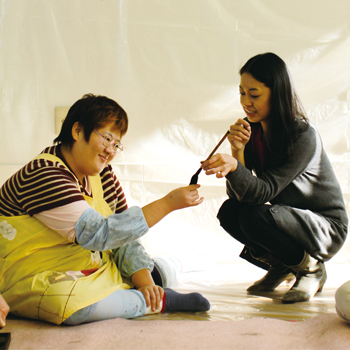Tomoko Kawao shodō artist
What got her through this period was shodō. She had been familiar with the art since early childhood, and she became increasingly convinced that this was what she had to do with her life. Upon graduation from university in 2004, she rejected a job offer from a fashion company, and instead became apprenticed to shodō master Shoshu, in order to begin truly establishing herself as a shodō artist.
Kawao offers occasional shodō classes at temples, and has some tips for those interested in trying their hand. "Concentration is key, since writing with ink and brush is an all-or-nothing exercise. We live in a society where you can redo basically anything, but I would recommend you to keep in mind that each piece of paper gives you only one chance, and if you mess it up, that’s it. Focus is everything. For example, you can heighten your concentration through the process of grinding the ink stick. Also, just before you begin to write, take a moment to give thanks for environment that allows you to practice shodō."
A fortunate meeting
The essence of shodō
According to Kawao, in Japanese shodō everything begins and ends on "one layer." This quality separates Japanese shodō from other types of calligraphy or typography and even other brush-and-ink art. She explains, "By ‘one layer,’ I mean that everything is given only one chance, and nothing is allowed to be edited or redone. This is the aspect of Japanese shodō I like best. Nothing reappears; all is transient and graceful. Each line remains uninterrupted from start to finish. Nothing can ever be done the same way once it is on paper.”
Perhaps shodō is a reflection of Japanese perspectives on life and nature. Each moment passes and is gone, never to return. One tries to live life in harmony with the fleeting seasons, in oneness with the natural flow of water or clouds. During our interview, it was as if we gained some insights into our own Japanese views of life and nature, through shoka Tomoko Kawao's own perspective on her craft.
2013 in a single kanji
During our interview with Tomoko Kawao, we asked her if she might put brush to paper and express her feelings about the past year in a single kanji. After thinking for a moment, she knelt gracefully on the floor in front of a huge white piece of paper, eyes softly closed, as if in meditation. On this particular day, a typhoon was approaching, and her studio, located right in the mountains, rattled in gusts of wind. The air was filled with tension, and an electric sense of anticipation. Something was about to happen. In the distance a bird cried out, as if trying to send us a message.
The kanji she chose to write was 深 (fuka or shin, meaning “deep”). It is quite a common character in often used in everyday life, but also rather flexible in the sense that it can communicate different meanings depending on the usage.
For example, in Japanese you can conduct in-depth research, just as you breathe deeply, deepen a relationship, have deep feelings, and appreciate deep colours. This word can be used in a variety of ways, and yet it is also universal. What surprised us more than anything was that the kanji she chose was a perfect match for the goals of this publication – to deepen understanding and communication between foreign visitors and the city of Kyoto.
Kawao’s mission – to reinvent several thousand years of kanji tradition.
The Correlation series was created through much trial and error. What is unique about this series is that aside from the two dark points of each work, Kawao’s brush never once comes into direct contact with the paper. In other words, the myriad lines are actually traces of ink dripping on the paper from above, as the brush moved through the air between those two points. As a result, the completed piece becomes a visual representation of the brush’s arc. The two points symbolize opposing notions, such as "you and I" or "past and future." The sense of an invisible yet powerful “something” connecting the two points is expressed here. It is the very definition of “correlation”- the “something” that exists between a call and a response. Kawao’s unique approach to shodō has breathed fresh life into the ancient traditions of kanji. "This series is something I will continue to explore and expand upon," she says. Perhaps we are witnessing a tradition in the making, a new precedent in the world of shodō that will continue for thousands of years hence.
【Calligraphic works】
TEDxKyoto 2013 official banner
【Copyright 2013 TEDxKyoto】
This work is licensed under a Creative Commons Attribution-NonCommercial-NoDerivs 3.0 Unported License.
Hankyu Arashiyama Station sign
Kawao created a shodō piece for the sign welcoming visitors as they alight from Hankyu’s Arashiyama station. Arashiyama is a popular tourist destination famous for location s such as Togetsu-kyo bridge and the Arashiyama Bamboo Forest.
Ei’un-in temple sign
A stone monument engraved with Kawao’s shodō work stands outside Ei’un-in temple, located in Kurotani-cho, Sakyo-ku, Kyoto. Ei’un-in is a sub-temple of Konkai Komyoji, and is not usually open to the public. It is, however, used for special occasions such as art performances and film screenings.
【Performances】
Kawao often performs shodō in front of an audience- an opportunity to witness live the moment of creation. Pictured is her performance as she writes the character 心 (kokoro, ‘heart’) at a Hina-matsuri event at Seigan-ji Temple in March last year.





